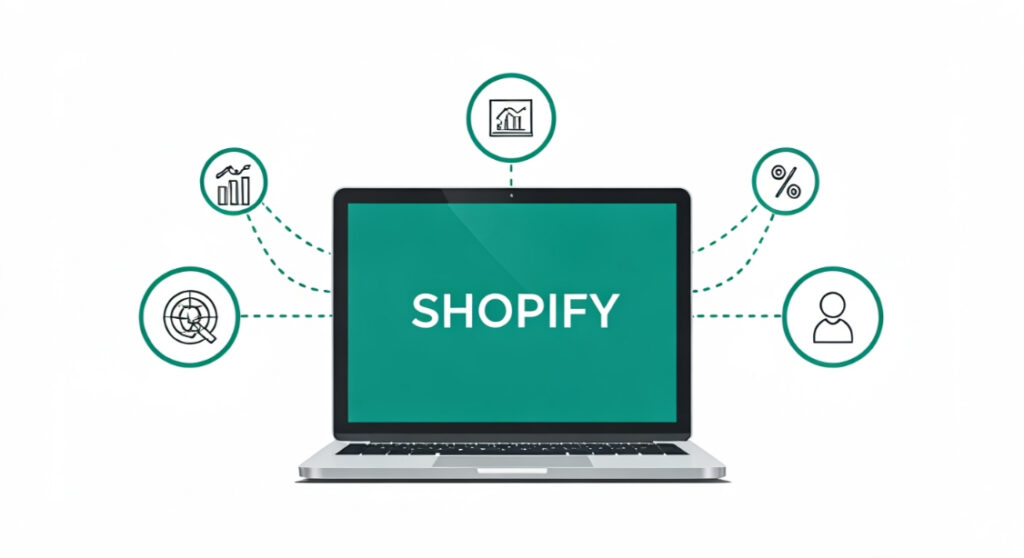Migrate Weebly to Shopify: A Step-by-Step Guide


Thinking of migrating your website? Our guide covers a step-by-step process to migrate Weebly to Shopify seamlessly. Unlock your e-commerce potential today!
Migrate Weebly to Shopify: A Step-by-Step Guide
Why Choose Shopify Over Weebly for Your Online Store?
- Scalability: Weebly’s limited scalability can be a bottleneck for businesses experiencing rapid growth. Shopify provides the infrastructure to handle increasing traffic and transactions without compromising performance.
- Advanced E-commerce Features: Shopify boasts a comprehensive suite of e-commerce tools, including advanced product filtering, customer segmentation, abandoned cart recovery, and multi-channel selling. These features are either lacking or significantly limited on Weebly.
- App Ecosystem: Shopify’s extensive app store unlocks a world of possibilities, allowing you to customize your store with specialized apps for everything from email marketing to inventory management to dropshipping. Weebly’s app store is far less developed.
- Theme Customization: While Weebly offers pre-designed themes, they often lack the flexibility required to create a truly unique and branded online store. Shopify provides a wider range of highly customizable themes, as well as access to custom theme development for businesses with specific design requirements.
- SEO Capabilities: Shopify offers superior SEO capabilities compared to Weebly, allowing you to optimize your store for search engines and attract more organic traffic.
- Payment Gateways: Shopify supports a wider array of payment gateways than Weebly, giving your customers more options and increasing conversion rates.
- Reporting and Analytics: Shopify provides more in-depth reporting and analytics, enabling you to track key performance indicators (KPIs) and make data-driven decisions.
- Community and Support: Shopify has a large and active community of developers, designers, and business owners, providing a wealth of resources and support.
Planning Your Shopify Migration: Laying the Groundwork
1. Audit Your Weebly Store
- Inventory: Catalog all your products, including descriptions, images, prices, and variations.
- Content Pages: Identify all your important content pages (e.g., About Us, Contact Us, Shipping Policy) and determine whether you want to migrate them to Shopify.
- Blog Posts: Decide which blog posts you want to keep and whether to migrate them.
- Customer Data: Export your customer list, including names, email addresses, and purchase history.
- SEO Data: Note your existing page URLs, meta descriptions, and other SEO-related information.
2. Define Your Shopify Store Structure
- Navigation: Map out your main navigation menu and product categories.
- Product Collections: Organize your products into relevant collections.
- Content Pages: Determine the layout and content of your key content pages.
3. Choose a Shopify Theme
- Design Aesthetics: Choose a theme that reflects your brand’s style.
- Functionality: Ensure the theme supports the features you need (e.g., product filtering, customer reviews).
- Responsiveness: Make sure the theme is mobile-friendly.
4. Set Up Your Shopify Account
Step-by-Step Guide: Migrating Your Weebly Data to Shopify
1. Export Your Weebly Products
- Manually copy and paste: If you have a small number of products, you can manually copy product details (name, description, price, images) into a spreadsheet.
- Use a third-party app: Some third-party tools claim to help extract data from Weebly, but exercise caution and research their reliability before using them. Be aware of potential security risks.
- Hire a developer: For larger stores, hiring a developer to create a custom script to extract your product data might be the most efficient solution.
- Handle
- Title
- Body ()
- Vendor
- Product Type
- Tags
- Published
- Option1 Name
- Option1 Value
- … (and so on for more options)
- Variant SKU
- Variant Grams
- Variant Inventory Tracker
- Variant Inventory Qty
- Variant Inventory Policy
- Variant Fulfillment Service
- Variant Price
- Variant Compare At Price
- Variant Requires Shipping
- Variant Taxable
- Variant Barcode
- Image Src
- Image Position
- Image Alt Text
2. Import Your Products into Shopify
- In your Shopify admin, go to Products > All products.
- Click Import.
- Click Add file and select your CSV file.
- Review the import preview and click Import products.
3. Migrate Content Pages
- In your Shopify admin, go to Online Store > Pages.
- Click Add page.
- Copy the content from your Weebly page and paste it into the Shopify page editor.
- Customize the page’s layout and design.
- Click Save.
4. Transfer Blog Posts (If Desired)
- In your Shopify admin, go to Online Store > Blog Posts.
- Click Add blog post.
- Copy content from your Weebly blog post and paste it into Shopify.
- Add images, videos, or other media.
- Optimize the post for SEO using title tags and meta descriptions.
- Click Save.
5. Manually Recreate Navigation
- In your Shopify admin, go to Online Store > Navigation.
- Choose a menu (Main Menu or Footer Menu).
- Click Add menu item.
- Enter a link title (what your customer will see).
- Enter a destination link to an internal page/product, or an external URL.
6. Setting Up Redirects
7. Test and Refine
- Product Pages: Verify that product information, images, and pricing are accurate.
- Checkout Process: Test the checkout process to ensure it’s smooth and error-free.
- Navigation: Ensure that your navigation menu is working correctly.
- Content Pages: Review all content pages for accuracy and formatting.
- Mobile Responsiveness: Check the store’s appearance and functionality on different devices.
Essential Post-Migration Tasks
- Connect Your Domain: Point your domain name to your Shopify store.
- Set Up Payment Gateways: Configure your preferred payment gateways.
- Configure Shipping Settings: Set up your shipping rates and options.
- Install Essential Apps: Install any essential Shopify apps to enhance your store’s functionality.
- Monitor Performance: Track your store’s performance using Shopify’s analytics tools.